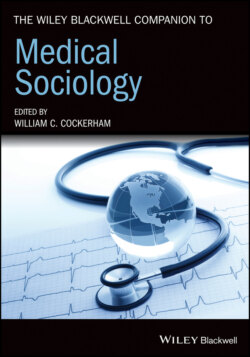Читать книгу The Wiley Blackwell Companion to Medical Sociology - Группа авторов - Страница 39
Critical Realism
ОглавлениеCritical realism is a relatively new theoretical perspective that emerged in Britain and is based on the work of philosopher Roy Bhaskar (1994; 1998) and sociologist Margaret Archer (1995; 2000; 2003; Archer et al. 1998). Critical realist theory argues that social constructionism does not account for agency and provides an “oversocialized” view of individuals overemphasizing the effects of structure, while other theorists, like Bourdieu, opt for a “seamless” approach to agency and structure, but the operations of the two in reality are not synchronized. Consequently, critical realism treats agency and structure as fundamentally distinct but interdependent dimensions that need to be studied separately in order to understand their respective contributions to social practice. The “analytical decoupling of structure and agency” is necessary, states Williams (1999:809), “not in order to abandon their articulation, but, on the contrary, so as to examine their mutual interplay across time; something which can result both in stable reproduction or change through the emergence of new properties and powers.”
Critical realism takes the position that social systems are open to process and change and that people as agents and actors have the critical capacity, reflexivity, and creativity to shape structure, yet, in turn, are shaped by structure. But the key factor for the critical realist is the capacity of the individual to transform structure and produce variable outcomes (Archer 1995). Structure, for its part, is relatively enduring, although it can be modified, and deep structures have generative mechanisms going beyond the observable that influence behavior. A goal of critical realism is to connect agency and structure in a way that the distinctive properties of both can be realistically accounted for without being reduced to a single entity. Among the studies in medical sociology employing critical realism to date are examinations of the body from the standpoint of chronic illness and disability, which focus on the interrelationship of biological and social factors in shaping outcomes (Williams 1999), an attempt to develop a sociology of health inequalities which goes beyond orthodox social epidemiological studies (Scambler 2002; 2018) and a study of psychiatric categories (Pilgrim 2014). That critical realism in relation to health is an ongoing project is evidenced by a new “practical handbook” published in the UK for researchers in that domain of study (Alderson 2020).
